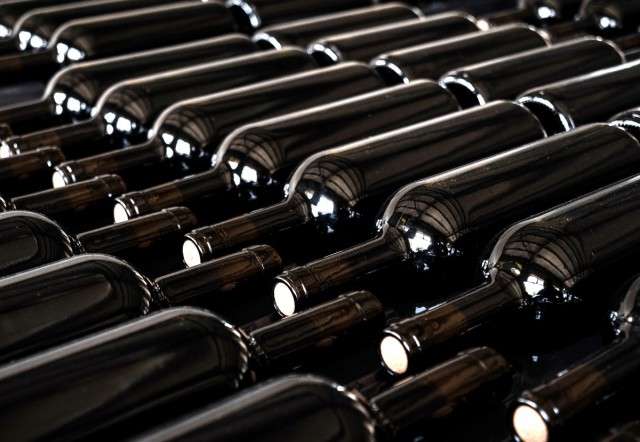Shipping wine to be packed in the UK offers social, green and financial solutions to today's issues, says Anne Kreppel MW
The energy and supply chain crises have highlighted the advantages of shipping wine in bulk, both financially and environmentally. Sustainability is discussed almost exclusively in environmental terms when in fact it includes three equal aspects: environmental, economic and social sustainability.
Financial incentives are what have so far pushed bulk wine forward, but if implemented correctly, sustainability should trickle down to the bottom line and benefit the environment and people.
Figures from the Wine and Spirit Trade Association show that the UK imported 340 million liters of bulk wine in 2010, representing 26% of total wine imported. By 2019, this had turned into 516 million litres, or 39%, of imported wine. Even wines sold at high prices sometimes leave their country of origin in large quantities and are bottled in the UK.
The consumer is usually wiser and continues to purchase them happily. The bulk wine trade takes place mostly behind the scenes.
Many consumers say environmental concerns matter to them, but price is still the biggest driver of behavior. Some might argue that truly sustainable wine should cost more and be drunk where it is produced, but the world simply is not like that.
“Where to bottle wine is not on consumers’ agenda,” says Paul Brydon, head of purchasing at Kingsland Drinks, the company that first introduced modern table wine in bulk to the UK in the 1960s. “Our own research in 2018 found that 95% of consumers don’t think about where their wine is bottled,” says Brydon.
“Consumers are choosing wines that suit their occasion, looking for quality at a great price.”
90% of bulk wine “is bottled, while the remaining 10% is split between other formats such as cans and sachets,” says Brydon.
Lesley Cook, purchasing director at bulk wine specialist Lanchester Wines, explains the benefits in terms of costs and carbon emissions.
“The most obvious benefit is that you can double the volume of shipments. One 20-foot container has a capacity of 9,900 liters of (bottled) wine, while the same container with a flexible tank can hold 24,000 liters – resulting in a 40% saving of carbon emissions.
The cost savings of shipping the equivalent of 32,000 bottles at the same price as 13,200 bottles in a row makes the retail price more competitive.
Wasteful practices
“When bottling wine at source, in many cases the winery needs to import dry goods, such as bottles,” notes Greg Livengood, president of California-based global bulk wine company Ciatti. “Once you bottle them, you have to ship them back.” Such practices are wasteful and expensive.
“There's no doubt that economic sustainability has really helped drive the bulk wine category,” Livengood says. “People running wineries around the world are seeing the value of bulk wine, and how the cost benefits relate to their bottom line. The environmental argument is coming, but it lags behind the economic logic.”
Shipping wine from New Zealand in flexible tanks and packing it in the UK could result in lower carbon emissions than trucking wine to Calais from the French wine region and to the Wine Society's headquarters in 2016, says Dom de Ville, director of sustainability at the Wine Society. From Dover. But he also warns that the savings made by sea shipping in bulk could be negated by road transport after the wine reaches the UK.
De Ville points out that the bulk of the wines will take careful modeling of transportation and packaging scenarios for the Wine Association, which has a large portfolio of wines sold in relatively small quantities. The benefits are more pronounced for larger operators with fewer wines.
But he is clear: “We want to explore bulk shipping because there are financial and environmental benefits.”
County Durham-based Lanchester Wines and its sister company Greencroft Bottling are working with “feeder services to move containers to the Port of Tyne in Newcastle or Teesport near Middlesbrough, rather than via Felixstowe and Tilbury”, cutting carbon emissions by 45%, Cook says. % on freight by rail and 68% by road.
Beyond the obvious cost savings, there is another compelling reason to reduce packaging in the form of Extended Producer Responsibility, a new regulation on recycling known as Enterprise Resource Planning (ERP). This will be phased in from this year, and is scheduled to come into effect in 2024, and will increase the cost burden and burden of data recording requirements for packaging recycling costs on brand owners and importers, which are assessed on a weight basis.
Financial benefits
“This will make packaging fees more expensive” in the future, notes the Wine Society's De Ville. Anything that reduces the weight of the packaging, whether through the weight of the glass or alternative materials, without affecting the quality of the wine, will provide financial benefits.
There is much room for improvement in the way wine is bought, sold and transported around the world. Greencroft Bottling's state-of-the-art facility, which is scheduled to become fully operational in early 2023, reveals what can be done.
The new site will have packaging lines, “additional lines for boxed pouches, cans, pouches, key drums or any new types of sustainable packaging,” and “a new counter-press line with sparkling capabilities,” notes Tony Cleary. , Managing Director of Lanchester Group.
But what's really different is that this facility will be self-powered, with both solar panels and wind, and will be thermally efficient via insulation.
“We're spending more than we would on a new building, but we'll soon recoup that extra investment through energy savings, so what's good for the planet is good for business too,” Cleary adds.
These plans were drawn up before the energy crisis, but it is clearer that they make sense now. The next decade will see a lot of change. The energy crisis has put a real question mark on glass, due to its high energy consumption and smelting costs. Innovation in packaging technology raises other questions. Why aren't master barrels so ubiquitous anymore in the trade? Will it be used in retail and give a boost to independent wine stores? Will a new infrastructure based on small-batch artisan wines emerge? Will people buy wine in bags? Will there be a breakthrough in terms of PET bottles fitting into mailboxes?
There are many solutions to improve sustainability in all its forms if we break old habits. Wine has been with us for thousands of years and will continue to be with us; It may reach us in different ways.


